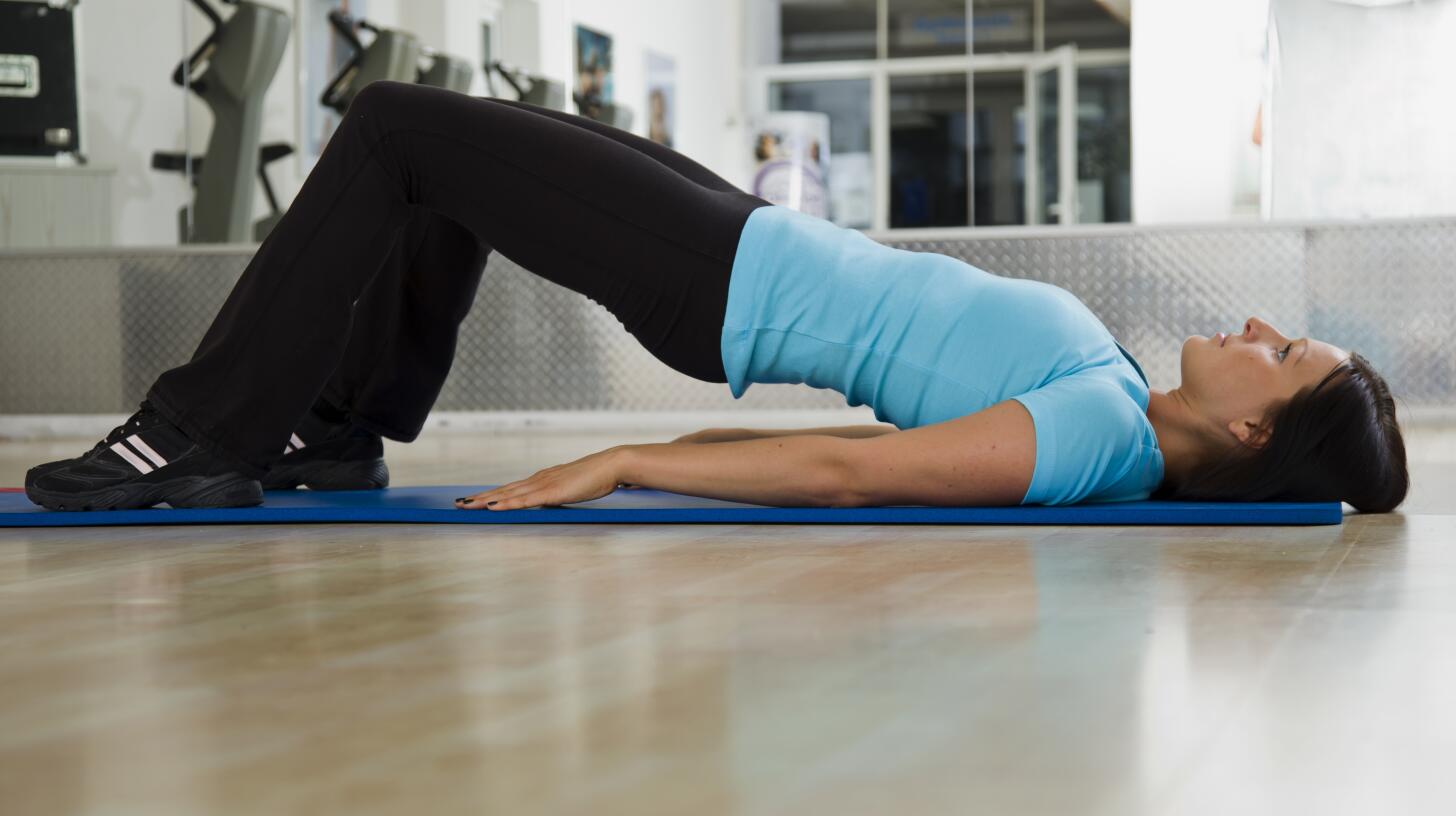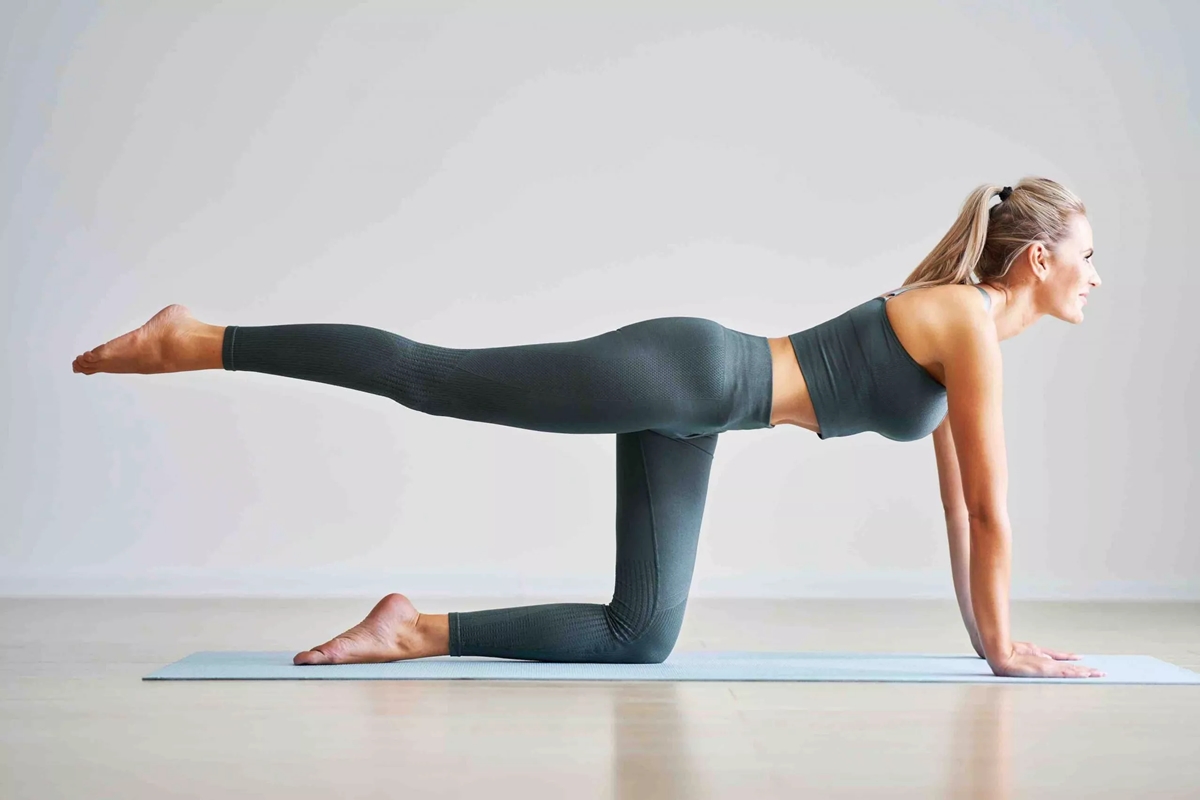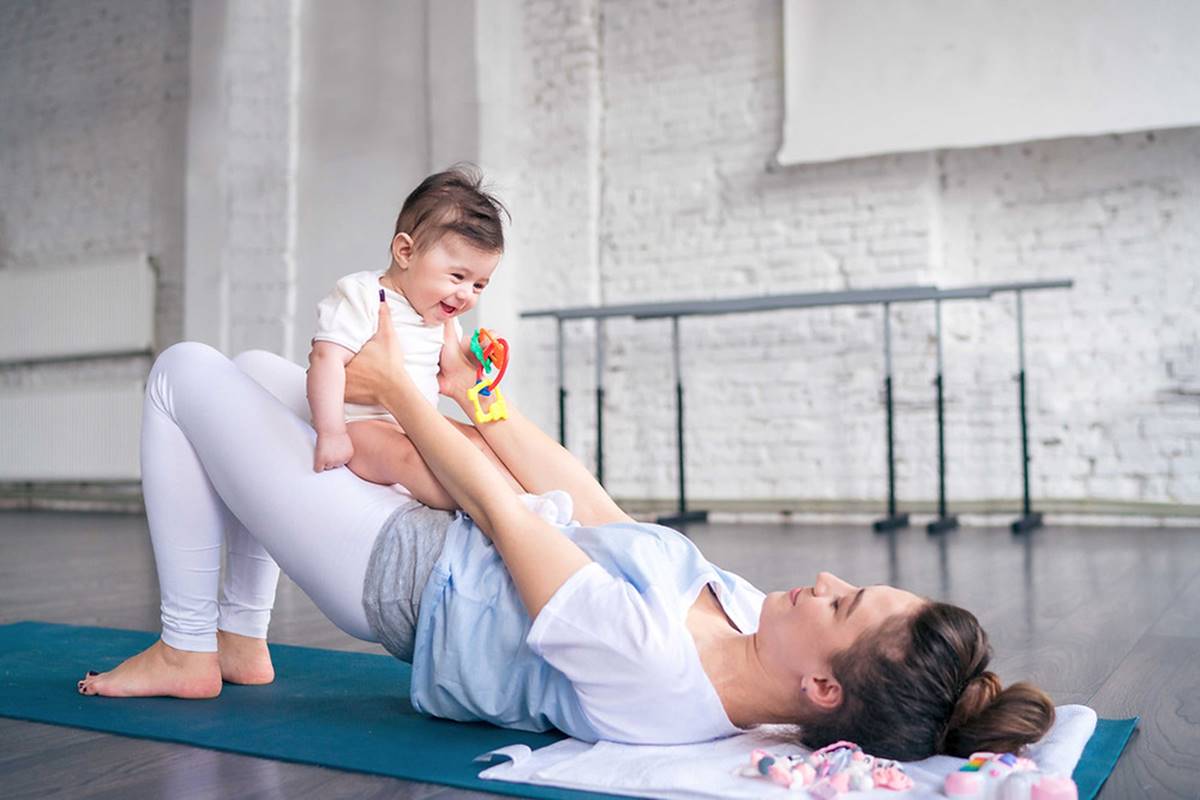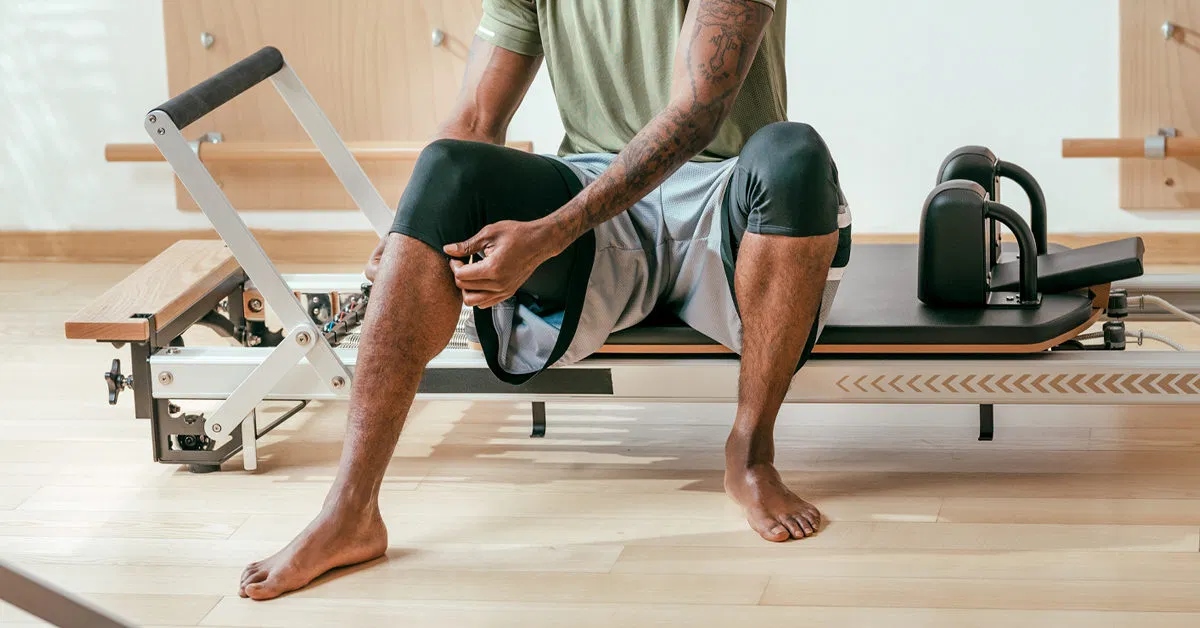Home>Misc>Featured>How Soon Can I Exercise After Cataract Surgery
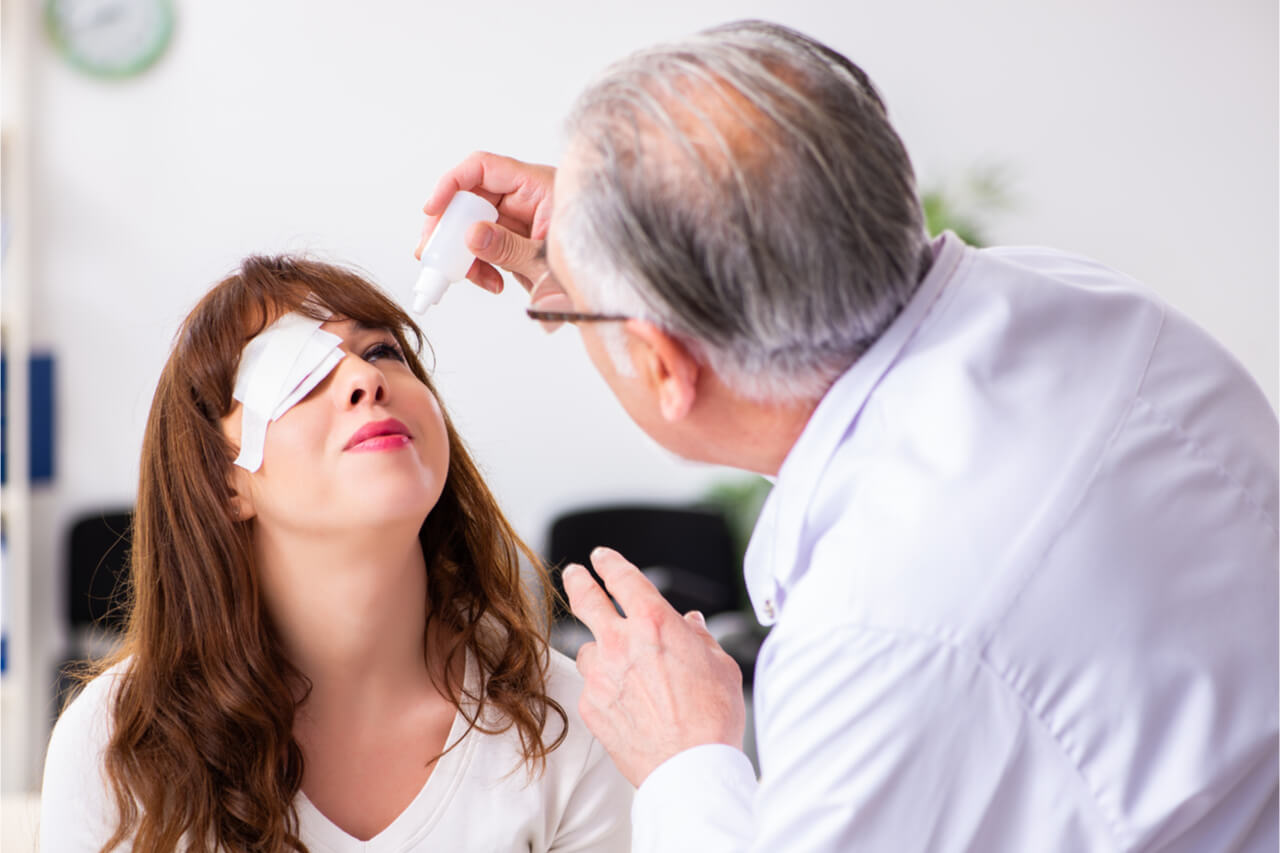

Featured
How Soon Can I Exercise After Cataract Surgery
Published: September 25, 2023
Find out when you can safely resume your exercise routine after cataract surgery. Discover featured tips for a smooth recovery.
Introduction
Welcome to this comprehensive guide on exercising after cataract surgery. If you have recently undergone cataract surgery, you may be wondering when it is safe to resume your exercise routine. While staying active is important for overall health and well-being, it is crucial to approach post-surgery exercise with caution to avoid any complications or delays in the healing process. In this article, we will explore the importance of exercise after cataract surgery, factors to consider before resuming exercise, a recommended timeframe for exercise, types of exercise to avoid, and tips for safely incorporating exercise into your recovery.
Cataract surgery is a common procedure performed to remove the cloudy lens of the eye and replace it with an artificial lens, improving vision and quality of life. It is a relatively safe and effective surgery, but it is essential to give your eyes and body proper time to heal.
After cataract surgery, exercising too soon or engaging in intense physical activities can put stress on the eyes and increase the risk of complications such as infection, inflammation, increased eye pressure, or dislodgement of the artificial lens. Therefore, it is crucial to follow your eye surgeon’s instructions and allow adequate time for your eyes to heal before embarking on any strenuous exercise regimen.
However, it is also important to note that complete bed rest is not recommended after cataract surgery. Light physical activity, such as gentle walking, can promote blood circulation, reduce the risk of blood clots, and aid in the healing process. Consulting with your surgeon and following their advice is vital for a safe and successful recovery.
Now, let us delve into why exercise is important after cataract surgery and the factors that should be considered before resuming physical activity post-surgery.
Understanding Cataract Surgery
Cataract surgery is a common and highly successful procedure performed to treat cataracts, which are the clouding of the natural lens of the eye. Cataracts can cause blurry vision, difficulty seeing in low light conditions, and can significantly impact daily activities. By removing the cloudy lens and replacing it with an artificial lens, cataract surgery aims to restore clear vision and improve the quality of life for individuals affected by cataracts.
The surgery is typically performed on an outpatient basis, meaning that you can go home on the same day. It is usually conducted using local anesthesia or minimal sedation, ensuring the patient’s comfort throughout the procedure. During the surgery, a small incision is made in the front portion of the eye, and the cloudy lens is broken up and removed using ultrasound energy. The artificial lens, called an intraocular lens (IOL), is then inserted to replace the natural lens.
Following cataract surgery, it is common for patients to experience some temporary discomfort, such as itching, mild pain, and sensitivity to light. However, these symptoms usually subside within a few days to weeks. The visual recovery time varies for each individual, with some experiencing improved vision almost immediately, while others may take a few days or even weeks to notice the full benefits of the surgery.
It is essential to follow post-operative care instructions provided by your eye surgeon to ensure proper healing. These may include using prescribed eye drops, wearing a protective shield at night, avoiding activities that may strain the eyes, and attending follow-up appointments to monitor progress.
Now that we have a better understanding of what cataract surgery entails, let us delve into why exercise is crucial during the recovery period and what factors need to be considered before resuming physical activity after the surgery.
Importance of Exercise after Cataract Surgery
Exercise plays a crucial role in maintaining overall health and well-being, and this holds true even after cataract surgery. Engaging in regular exercise can have numerous benefits, not only for your general well-being but also for your post-operative recovery. Here are some important reasons why exercise is essential after cataract surgery:
- Promotes overall health: Regular exercise helps improve cardiovascular fitness, strengthen muscles, boost immune function, and maintain a healthy weight. By staying active, you are supporting your body’s natural healing processes and improving your overall health.
- Aids in reducing inflammation: Cataract surgery can cause some degree of inflammation in the eye. Engaging in physical activity, especially low-intensity exercises like walking, helps promote blood circulation and reduces inflammation, aiding in the healing process.
- Positively impacts vision: Exercise can have a positive impact on eye health. Research suggests that exercise may help reduce the risk of certain eye conditions, such as age-related macular degeneration (AMD) and glaucoma. By incorporating regular exercise into your routine, you can support the long-term health of your eyes.
- Enhances mental well-being: Exercise has been shown to boost mood, reduce stress, and improve mental well-being. Cataract surgery can be a stressful experience, and engaging in physical activity can help alleviate anxiety and promote a positive mindset during the recovery period.
- Encourages a faster recovery: Gentle exercises can help improve blood circulation, which in turn enhances the delivery of nutrients and oxygen to the healing eyes. This promotes a faster recovery and may help reduce the risk of complications.
While exercise offers numerous benefits after cataract surgery, it is essential to approach it with caution. It is important to remember that every individual’s recovery is unique, and you should always consult with your eye surgeon before starting or resuming any exercise regimen. Your surgeon will assess your specific condition, take into consideration any other medical conditions you may have, and provide personalized recommendations for exercise after cataract surgery.
Now that we understand the importance of exercise after cataract surgery, let’s explore the factors that need to be considered before resuming physical activity.
Factors to Consider Before Resuming Exercise
Before getting back into your regular exercise routine after cataract surgery, it is essential to consider a few factors to ensure a safe and successful recovery. Here are some key factors to keep in mind:
- Consultation with your eye surgeon: Prior to resuming exercise, it is crucial to consult with your eye surgeon and obtain their approval. They will evaluate your specific case, taking into consideration factors such as the type and severity of your cataract, any other eye conditions you may have, and your overall health. Your eye surgeon will provide personalized recommendations and guidelines on when it is safe to start exercising again.
- Healing progress: Each individual’s healing progress after cataract surgery can vary. It is important to wait until your eyes have fully healed before engaging in any strenuous activities. Your eye surgeon will assess the healing progress during your follow-up appointments and advise you on when it is appropriate to resume exercise.
- Type of exercise: The type of exercise you engage in plays a significant role in determining when it is safe to resume. Low-impact exercises, such as walking, cycling, or swimming, are generally safe to start earlier in the recovery period. However, you should avoid high-impact or strenuous activities that can put excessive strain on your eyes, such as weightlifting or high-intensity cardio, until you have fully recovered.
- Physical comfort and stability: It is important to assess your physical comfort and stability before resuming exercise. If you still feel any discomfort or have difficulty maintaining balance, it is advisable to wait until these issues have resolved before engaging in any exercise routines.
- Follow post-operative instructions: Adhering to the post-operative care instructions provided by your eye surgeon is crucial. These can include wearing a protective eye shield during physical activities, using prescribed eye drops, and avoiding activities that may strain the eyes. Following these instructions will help ensure a smooth and successful recovery.
Remember, each individual’s recovery journey is unique, and it is important to listen to your body and follow the guidance of your eye surgeon. By considering these factors and taking the necessary precautions, you can safely resume exercise and reap the many benefits it offers after cataract surgery.
Now that we have covered the factors to consider before resuming exercise, let’s discuss the recommended timeframe for exercise after cataract surgery.
Recommended Timeframe for Exercise after Cataract Surgery
The timeframe for resuming exercise after cataract surgery can vary depending on individual factors and the specific instructions provided by your eye surgeon. While every person’s recovery is unique, here are some general guidelines to consider:
- Immediate post-operative period: During the immediate post-operative period, it is essential to prioritize rest and allow your eyes to heal. Your eye surgeon may advise you to avoid any form of exercise, including activities that can increase blood pressure or strain the eyes.
- First few days to weeks: During the first few days to weeks after surgery, light physical activities such as gentle walking are generally safe and encouraged. Walking promotes blood circulation, which aids in healing, without putting excessive strain on the eyes.
- Progressive increase in activity: As your eyes continue to heal and your comfort levels improve, you can gradually increase the intensity and duration of your exercise routine. However, it is still important to avoid any exercises that involve heavy lifting, bending over, or activities where there is a risk of getting hit in the eye.
- Full recovery: It usually takes about four to six weeks for most individuals to achieve full recovery after cataract surgery. By this point, you should be able to resume your regular exercise routine, including more vigorous activities, with your eye surgeon’s approval.
It is crucial to follow the guidance and recommendations of your eye surgeon regarding the specific timeframe for resuming exercise. They will assess your progress during follow-up appointments and provide personalized advice based on your unique circumstances.
Remember, it is better to err on the side of caution and gradually introduce exercise back into your routine as you feel comfortable. If you experience any discomfort, pain, or changes in vision during or after exercising, it is important to stop and consult your eye surgeon immediately.
Now that we understand the recommended timeframe for exercise after cataract surgery, let’s explore the types of exercise to avoid during the recovery period.
Types of Exercise to Avoid
While exercise is beneficial for overall health, there are certain types of activities that should be avoided during the recovery period after cataract surgery. These activities can put stress on the eyes, potentially leading to complications or delays in the healing process. Here are some types of exercise to avoid:
- High-impact activities: Exercises that involve significant jarring or bouncing movements, such as running, jumping, or aerobics, should be avoided during the early stages of recovery. These activities can put excessive strain on the eyes and increase the risk of dislodging the artificial lens or causing damage to the surgical site.
- Heavy lifting: Activities that require heavy lifting, such as weightlifting or strength training, should be avoided during the initial recovery period. Lifting heavy weights can increase pressure in the eyes and potentially lead to complications or discomfort.
- Activities with a risk of eye injury: Sports or recreational activities like basketball, soccer, or racquetball should be avoided until your eye surgeon gives you the green light. These activities carry a higher risk of accidents or getting hit in the eye, which can cause damage to the surgical site.
- Bending over or inversions: Activities that involve frequently bending over or inverting the body, such as yoga poses like Downward Dog or Headstands, should be avoided during the early stages of recovery. These positions can increase intraocular pressure and strain the eyes.
- Exercises in dusty or dirty environments: Engaging in exercise in dusty or dirty environments can increase the risk of infection, which can be particularly detrimental during the recovery process. It is important to exercise in clean and well-ventilated areas to minimize the risk of complications.
It is crucial to remember that these restrictions are temporary and are in place to ensure a smooth recovery. As you heal and receive clearance from your eye surgeon, you can gradually reintroduce these activities back into your routine. Always consult with your eye surgeon before resuming any exercise regimen to ensure it is safe and appropriate for your specific situation.
Now that we understand the types of exercise to avoid, let’s explore some tips for safely incorporating exercise into your recovery.
Tips for Safely Incorporating Exercise into Recovery
When it comes to incorporating exercise into your recovery after cataract surgery, it is important to do so safely and with caution. Here are some tips to help you exercise safely during your recovery:
- Follow your eye surgeon’s advice: Always consult with your eye surgeon before starting or resuming any exercise routine. They will provide personalized recommendations based on your specific case and advise you on the appropriate timeframe for resuming exercise.
- Start with gentle activities: Begin your exercise routine with low-impact activities, such as gentle walking or light stretching. These activities help promote blood circulation and aid in the healing process without putting excessive strain on your eyes.
- Gradually increase intensity: As your eyes continue to heal and your comfort level improves, gradually increase the intensity and duration of your exercise sessions. Listen to your body and take breaks or modify exercises as needed.
- Protect your eyes: During exercise, especially in outdoor activities, wear protective eyewear, such as sunglasses or goggles, to shield your eyes from harmful UV rays, dust, and potential injuries.
- Avoid straining or lifting heavy objects: Be mindful of activities that require bending over or lifting heavy weights, as they can increase pressure in the eyes. If you need to lift objects, make sure to use proper form and avoid any strain on your eyes.
- Stay hydrated: Proper hydration is important for overall health and aids in the recovery process. Drink plenty of water before, during, and after exercise to keep your body and eyes well-hydrated.
- Listen to your body: Pay attention to any discomfort, pain, or changes in vision during or after exercise. If you experience any unusual symptoms, stop exercising and consult your eye surgeon immediately.
- Take it slow: Do not rush the recovery process. Give your body and eyes the time they need to heal. It is better to start with light exercises and gradually progress as you feel comfortable, rather than pushing yourself too hard too soon.
- Don’t neglect rest and recovery: Balance your exercise routine with ample rest and recovery time. Allow your body to recuperate between exercise sessions to avoid overexertion and promote a healthy healing process.
Remember, every individual’s recovery is unique, so it’s important to listen to your body and follow the guidance of your eye surgeon. By incorporating these tips into your exercise routine, you can safely and effectively accelerate your recovery after cataract surgery.
Now that we have explored the tips for safely incorporating exercise into your recovery, let’s wrap up our comprehensive guide.
Conclusion
Cataract surgery is a common procedure that aims to improve vision and enhance the quality of life for individuals affected by cataracts. After surgery, it is important to approach exercise with caution to ensure a safe and successful recovery. While exercise offers numerous benefits, it is crucial to consider factors such as your surgeon’s recommendations, healing progress, and the type of exercise to avoid. By following these guidelines and incorporating exercise into your recovery in a gradual and safe manner, you can optimize your healing process and promote overall well-being.
Exercise after cataract surgery plays a vital role in maintaining overall health, reducing inflammation, enhancing mental well-being, and encouraging a faster recovery. However, it is important to consult with your eye surgeon to determine the appropriate timeframe for resuming exercise and to receive personalized advice based on your unique circumstances.
Remember to start with gentle activities, gradually increase the intensity, protect your eyes during exercise, and listen to your body for any signs of discomfort or changes in vision. By following these tips, you can safely incorporate exercise into your recovery and experience the many benefits it offers.
Always prioritize your eye health and follow the post-operative care instructions provided by your eye surgeon. Regular follow-up appointments are essential to monitor your progress and ensure that you are healing properly. If you have any concerns or experience any issues during your recovery, do not hesitate to contact your surgeon for guidance and support.
In conclusion, exercise after cataract surgery should be approached with caution, but it is an important part of your recovery journey. By following the guidelines, consulting with your eye surgeon, and listening to your body, you can safely incorporate exercise into your routine and enhance your overall well-being as you regain clear and improved vision.
